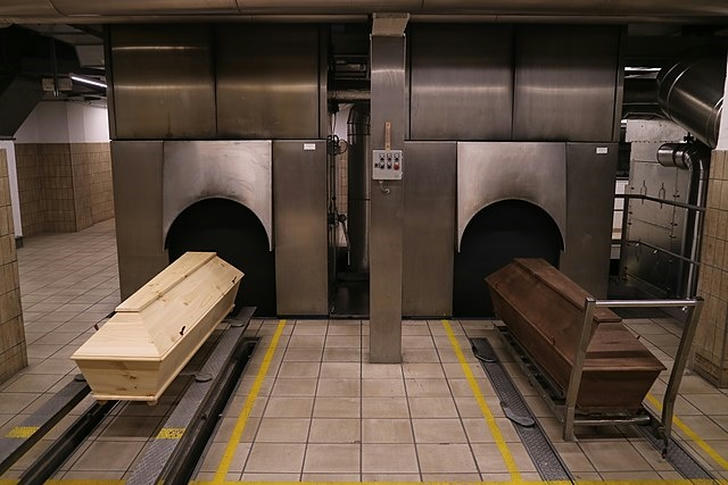What Happens to a Dead Body During Cremation?
Death is inevitable, yet most shy away from thinking about it. One of the most common ways to handle the deceased is cremation, though many are unaware of what happens during the process. For those curious about the eerie and unusual details, here are answers to some of the most common questions surrounding cremation.

Can a Dead Body Scream During Cremation?
This is often regarded as an urban legend. In reality, cremation chambers are not silent, but they do not cause screams. While bodies do make various noises such as sighs, groans, and even flatulence due to gases released during decomposition, no conscious thought is involved. These sounds, sometimes disconcerting, can mimic a person’s voice, but they are simply a result of muscle and bodily functions.
Can Dead Bodies Sit Up?
While rare, certain circumstances could cause a body to exhibit movement. After death, muscles go through a series of relaxations and contractions. Gases released from internal bacteria during decomposition can lead to bloating, which may cause the body to contort. In cold environments, bodies that were preserved may show signs of muscle movement when they begin to warm up.
What Happens to the Body, Bones, Teeth, and Skull During Cremation?
Cremation temperatures typically range from 1400 to 1800°F. At these extreme temperatures, all soft tissue—including organs, tendons, and muscles—turns to ash. While most smaller bones also turn to fine ash, larger bones such as the skull and vertebrae often remain intact. After the cremation chamber cools, any remaining bones or teeth are processed into a fine powder using an industrial processor, which helps ensure that all remaining material is reduced to ash.
Does Cremation Hurt the Body?
No. By the time a body enters the cremation chamber, all nervous system activity has ceased. Pain is a sensation that requires an active brain and functioning nerves, which are no longer present after death. Therefore, no pain is experienced during the process.
Are Organs Removed Before a Cremation?
Typically, organs are not removed before cremation. Exceptions include cases where a body undergoes an autopsy or is harvested for organ donation. If an autopsy is performed, organs are often removed for examination and later returned to the body. In organ donation, parts of the body may be removed to be used elsewhere. Pacemakers, which could cause dangerous explosions, are always removed before cremation, as are titanium bone replacements when applicable.
Is the Casket Burned with the Body?
In most cases, the body is placed into an alternative container—often a heavy-duty cardboard box—rather than an expensive casket. Caskets can be burned, but since they are costly, families may opt for simpler containers. In some regions, it is possible to use a body bag or similar alternatives for cremation, as mandated by laws governing funeral practices.
While wooden caskets are certainly capable of being incinerated at high temperatures, many choose not to waste the expense. Rental caskets, where only the interior is cremated and the outer shell reused, have also become increasingly popular for this reason.
Additionally, the law generally prohibits funeral homes from mandating the purchase of a casket for cremation, meaning a simple alternative container is usually sufficient for the process.
Here are the typical steps involved in preparing for cremation:
1. Choose a Cremation Provider
Select a licensed crematory or funeral home. Ensure the provider adheres to local laws and offers professional cremation services.
You can get recommendations from legal advisors, family members, or friends, or look for reviews and ratings of cremation services online.
2. Transport the Body
After death, the body needs to be transferred to the crematory. This may require professional transportation services.
If the death occurred in a hospital, nursing home, or other institution, staff will typically handle the transport arrangements.
3. Choose Cremation Type and Services
Decide whether you want a direct cremation (without a funeral service) or a cremation with a memorial service.
Choose an appropriate container for the body, which is often a durable cardboard box or a cremation-specific container. Traditional wooden coffins are not typically used unless requested.
Confirm if any memorial items or personal belongings should be placed with the body during cremation.
4. Complete the Necessary Documentation
Cremation requires certain documents, such as a death certificate, proof of identity, and any legal paperwork (e.g., cremation authorization or body disposal consent forms).
Ensure all documentation is in order to avoid delays or complications.
5. Handle Organ Donation or Special Wishes
If the deceased had registered as an organ donor, make sure this is communicated with the crematory.
If there are any special wishes or requests (such as not having the body processed before cremation), be sure to inform the provider.
6. Prepare for the Memorial Service (if applicable)
If a memorial service is planned before the cremation, arrange a time and venue, and invite friends and family to attend.
You can opt for a simple gathering or a more formal ceremony, depending on cultural or personal preferences.
7. Post-Cremation Handling of Ashes
After the cremation, the body will be reduced to ashes and bone fragments. These remnants are processed further and usually returned to the family as a fine powder.
The family can choose to keep the ashes in an urn or scatter them in a meaningful location, such as a garden, sea, or specific memorial site.
By following these steps, you can ensure that the cremation process is carried out in accordance with legal requirements and personal wishes. Although it can be a difficult time, planning and communication can help ease the process and bring comfort to those involved.
Cremation is a natural and respectful process of handling a body after death, and while it may seem unsettling to think about, understanding what truly happens during the process can help alleviate some of the mystery and discomfort associated with it.
